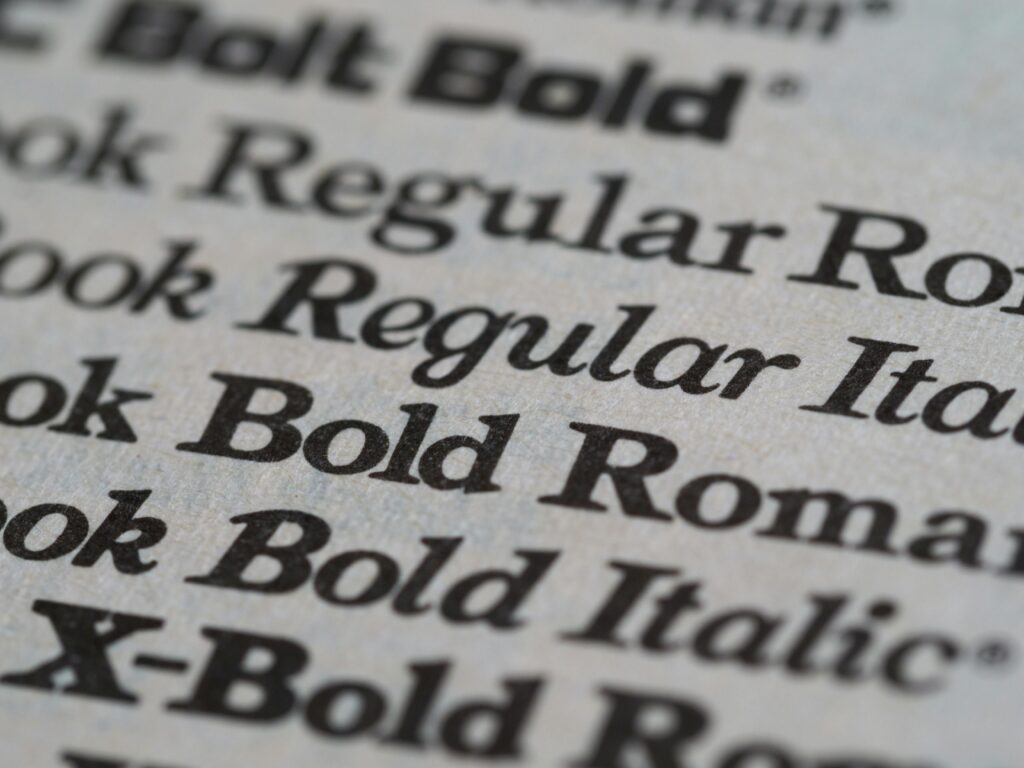
How Typography Affects User Experience?
Created By: Danielle Lesiw
In the world of graphic design, typography and font choices play a crucial role in creating visually appealing and effective designs that enhance the user experience. Typography is more than just arranging letters on a page; it’s an art form that can evoke emotions, convey messages, and leave a lasting impression on the viewer. In this article, we’ll explore why typography and font selection are essential elements of successful design and a positive user experience.
The Power of Typography
Typography is the art and technique of arranging type to make written language legible, readable, and visually appealing. It involves selecting the appropriate typeface, adjusting the size, line spacing, and overall layout to enhance the readability and impact of the design. Well-executed typography can:
- Establish a distinct brand identity
- Convey the intended tone and mood
- Guide the viewer’s eye through the design
- Enhance the overall aesthetic appeal
Typography is a powerful tool that can make or break a design. It has the ability to create a cohesive and harmonious visual experience or cause confusion and disrupt the flow of information.
The Psychology of Fonts
Fonts are not just a collection of letters; they carry their own personalities and evoke specific emotions and associations in the viewer’s mind. The right font choice can:
- Reinforce the message and purpose of the design
- Establish a connection with the target audience
- Enhance the overall brand perception
For example, a bold, sans-serif font might be well-suited for a modern tech company, conveying a sense of simplicity and innovation. In contrast, a script font with elegant flourishes could be an excellent choice for a luxury brand, evoking a sense of sophistication and elegance.
Readability and Legibility
While aesthetics are essential, readability and legibility should be the primary considerations when choosing a font for a design. Readability refers to how easily the test can be read and comprehended, while legibility refers to how easily the text can be read and comprehended, while legibility refers to how easily individual characters can be distinguished from one another. Factors that affect readability and legibility include:
- Font style (serif, sans-serif, script, etc.)
- Font size
- Line spacing
- Character spacing
- Color contrast
A well-designed layout with carefully selected typography can enhance the overall user experience, making it easier for the viewer to consume and understand the information presented.
Branding and Consistency
Typography plays a vital role in establishing and maintaining a consistent brand identity across various design elements. A cohesive typographic system can:
- Create a recognizable and memorable visual identity
- Ensure brand consistency across different platforms and mediums
- Reinforce brand values and messaging
Consistent use of specific typefaces, styles, and treatments can help build brand recognition and strengthen the emotional connection between the brand and its audience.
Hierarchy and Visual Flow
Typography can be used to create a sense of hierarchy and guide the viewer’s eye through the design. By varying font sizes, weights, and styles, designers can:
- Establish a clear hierarchy of information
- Highlight key messages or call-to-actions
- Create visual interest and movement
A well-structured typographic hierarchy can improve the overall usability and effectiveness of the design, ensuring that the most important information is easily accessible and attention-grabbing.
In Conclusion
Typography and font selection are essential elements of effective graphic design. They have theƒ power to evoke emotions, convey messages, and create a memorable visual experience. By understanding the psychology of fonts, prioritizing readability and legibility, establishing brand consistency, and utilizing typographic hierarchy, designers can create visually appealing and functional designs that resonate with their target audience.
This article was created by the author with assistance from AI.
